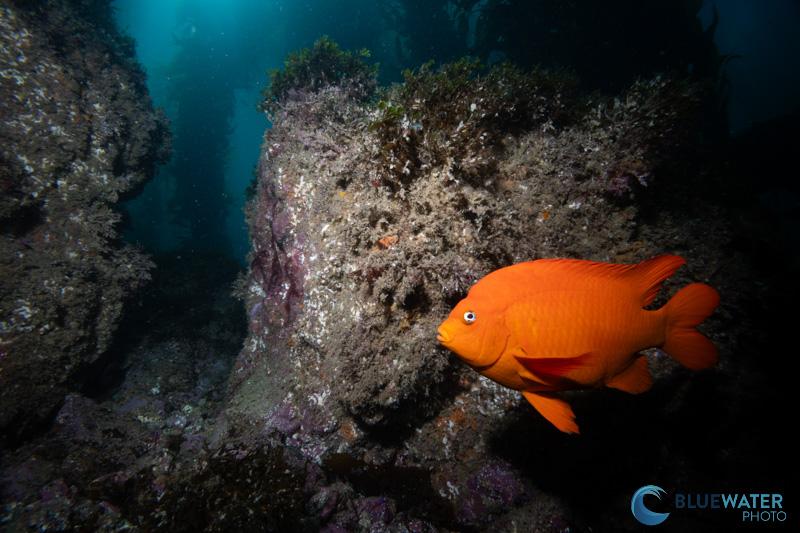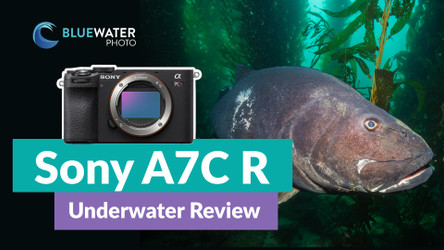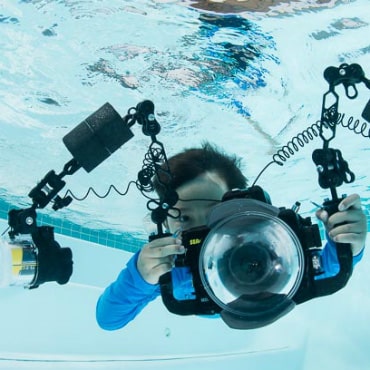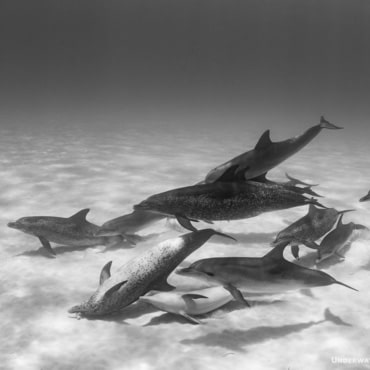Sony A7C R Underwater Review
Posted by Nirupam Nigam on July 20th, 2024

The Sony A7CR is the 61 megapixel, full-frame, high resolution camera that every underwater photographer has been waiting for. It's essentially a mini Sony A7R V - Sony's top performing high-resolution photo camera. The A7C R shares the same sensor and internal design as its larger counterpart - for the low cost of $2999, in a crop sensor sized body. While the Sony A7C R weighs in at about 430 grams (the A7R V is 720 grams), the most enticing benefit to its size are the small underwater housings built for the camera. The Ikelite A7CR housing features a smaller dry lock micro port design, and Nauticam's A7CR housing is also significantly smaller than their full frame offerings. Because these housings require smaller ports, the weight and space savings for travelling photographers using the A7C R can be significant. For example, I usually cut about 5-7 pounds out of my travel weight when switching from a full frame to APS-C camera. But this can vary depending on the model of the housing. Moreover, both available housings work also work with the lower resolution Sony a7C II - allowing for an easy upgrade if you're not ready to jump in with a high resolution camera.
Last month, we had the opportunity to dive with Ikelite and Diving Catalina on Santa Catalina Island in Southern California using the Sony a7C R. We paired it with the new LAOWA 10mm rectilinear wide angle lens —a great affordable option—and LAOWA's first autofocusing lens! After extensive shooting with the Sony A7R V, one of our most popular cameras at Bluewater, the Sony A7C R proved to be refreshingly similar. In fact, I didn't need to pick up a manual or even take the camera out of the housing before jumping in the water. That said there are a few select differences between the two cameras. Either way, the Sony a7C R is proving to be our favorite combination of size, value, and resolution for and underwater photo camera in 2024. After all, "C" stands for compact and "R" stands for resolution.

A split shot photographed before the dive with the Sony A7CR and the LAOWA 10mm f/2.8 rectilinear wide lens. 1/160, f/7.1, ISO 250
Support our Content and Purchase Your Housing at Bluewater Photo
All Sony A7C R Underwater Housings
Email us at sales@bluewaterphotostore.com for a customized quote
Sony A7CR Specifications
- 61 megapixel full-frame CMOS sensor
- 4K/60p video recording
- Single UHS-II SD card slot
- 10 fps burst shooting with the mechanical shutter
- BIONZ XR processor
- Dedicated AI autofocus processor
- 5 axis In-Body Image Stabilization with up to 7 stops of correction
- S-Log3, S-Cinetone, and other logarithmic recording options and LUT handling
- Animal eye autofocus tracking
- Autofocus to EV -4
- 1/160 second flash sync speed
- Size: 124 x 71.1 x 63.4mm
- Weight: 430 grams

This classic kelp forest shot shows the excellent dynamic range from the highlights to the shadows despite the high resolution, 61 megapixel files. f/11, 1/125, ISO1000
Sony A7CR vs Sony A7R V
The obvious big brother to the A7C R is the Sony A7R V. As we mentioned, both cameras feature the same sensor, autofocus processor, and autofocus system. However, there are some important key features available in the Sony A7R V that could justify the $500 price difference and increased size for some shooters.
- The Sony a7R V is equipped with an additional BIONZ XR processor allowing it to captured higher resolution 8K/24p video.
- The Sony a7R V has an additional stop of recovery with it's In-Body Image Stabilization system
- The Sony a7R V has dual card slots compatible with CFexpress. The Sony A7CR has a single UHS-II SD card slot.
- The Sony A7R V has a flash sync speed of 1/250s vs the 1/160s sync speed on the A7CR. It is nice to have the ability to shoot at a higher shutter speed to freeze underwater strobe photos and properly expose sunballs.
- The EVF (electronic viewfinder) on the Sony A7CR is not worth using underwater in an underwater housing. It is smaller than the EVF on the A7R V. We prefer using the LCD with the A7CR.
However, most photographers considering the Sony A7CR will be considering the size savings and "travelability" of the camera rather than the monetary difference between the two cameras.
Sony A7CR Key Features
The World's Highest Resolution Images
The Sony A7C R is built with the world's highest resolution full-frame sensor. 61 megapixels produces a massive amount of detail. In fact, it changes the way I shoot underwater. I've found that my triangle of exposure and stability underwater has to be absolutely perfect to get a good shot. Any small imperfections in your photo will show up as you crop down on the photo. But, of course, the added benefit is that you can produces an entirely different image with a crop and still retain enough detail for a large print.
One of the concerns that many photographers have about high resolution cameras is dynamic range (the amount of details captured from the highlights to the shadows of the image). While shooting in the California Kelp Forest (as seen in the above image), increased the ISO to 1000 to test the image quality with the sun shining through the kelp. Even in these high contrast lighting conditions at a high ISO, I was able to get plenty of details in my highlights with minimal noise in the photo.
The 100% crop below shows just how effective cropping can be with images from the Sony A7CR.
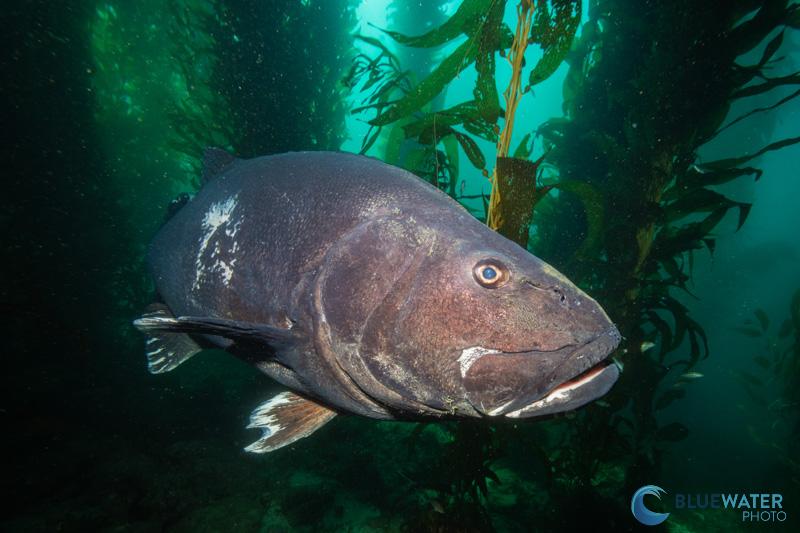
A legendary Giant Black Seabass captured with the Sony A7CR and a single Ikelite DS232 Strobe. f/14, 1/25, ISO800

A 100% crop test. You can see a little motion blur in the shot due to the low 1/25 of a second shutter speed.
High Performance Autofocus
The Sony A7CR has one of the best autofocus systems on the market. The camera is designed with a dedicated AI autofocus processor that uses machine learning to train the camera for better AF accuracy and "stickier" AF tracking. However, the A7CR has only a single BIONZ XR processor, instead of the two found on the A7R V. This does make the autofocus system ever so slightly less responsive than Sony's large bodied full-frame cameras. Was it noticeable while diving? No, not really. It was perhaps a little less accurate but every photo we attempted to capture was in focus.
The important takeaway was that we never missed a shot when shooting wide angle due to the effectiveness of the autofocus tracking system. With macro it could have been easier to miss more photos. But the A7CR is advanced enough where your photography starts to be a "point and shoot" experience. At the end of the day the A7CR is a camera that allows you focus on composition - it takes care of the rest.

A fast moving garibaldi photographed in the kelp forest with the Sony A7CR and the new Light & Motion Sola X video light. f/7.1, 1/160, ISO200
A Compact Camera Body
Or course, the standout feature of the Sony A7CR is its compact yet durable body. The camera weighs in at only 430 grams (1 lb). Most full frame mirrorless cameras weight about twice that much. The body is durable, ergonomic, and will be familiar if you are upgrading from another Sony camera. However, there are two significant downsides. The first is that the camera only has a single USH-II SD card slot. While this card will be fast enough for the defined specifications in the A7CR, it would have been nice to see an additional CFexpress card slot as found in the A7R V.
The second downside could be a dealbreaker for some underwater shooters who might be used to taking photos with a magnified viewfinder. The electronic viewfinder on the A7C R has been reduced to a significantly smaller size. In my opinion, it's not worth trying to use underwater. It would be better to stick with the LCD. But if you are upgrading from a DSLR camera, you should know that the autofocus system on mirrorless cameras is the same through the LCD as it is through the viewfinder. So the only downside of using the LCD is the angle you are viewing it.

Top-Quality 4K Video Recording
As you can see in our underwater video samples, the Sony A7C R is an excellent video camera with the capability of capturing extremely high quality 4K footage. It can shoot at a maximum frame rate of 60 frames per second which is an excellent feature if you'd like to slow down your footage during post production for added stabilization. But the in-body image stabilization built into the camera is also excellent. Like other Sony cameras, the A7C R has the full set of Sony video features including the ability to record in S-LOG3 and S-Cinetone.
Perhaps the main downside to the A7C R for underwater video is the 61 megapixel sensor. More megapixels typically introduces more noise at higher ISOs which can reduce the video quality. We didn't notice a significant degradation in our footage however. But if you are a dedicated video shooter it would be worth considering the Sony FX3 or Sony a7S III.
Who Should Buy the Sony A7CR?
There's an easy answer to this question. If you are looking for the best image quality, size, and price in the same camera and don't mind shooting using the LCD rather than the viewfinder - the Sony a7C R is the camera for you. Most underwater photographers who are considering the Sony a7R V should take a serious look at the Sony A7C R. If you don't need to film with 8K video, then it could be worth the cost and size savings of the A7C R. Afterall the image quality will be the same.
Sony A7C R Underwater Housings
There are currently two underwater housing options available for the Sony a7C R - the Ikelite A7C R polycarbonate underwater housing and the Nauticam A7C R anodized aluminum housing. We do hope to see additional housings from other brands, but at this rate it is unlikely.
The Ikelite A7C R housing is a great option for those looking at the A7C R and are considering their budget. It's an incredible value for money. Ikelite has update their housings recently with newer, more ergonomic dials. Moreover, the A7C R housing is a dry lock micro housing - not the larger dry lock style housing. This means you can shave off significant weight and size with smaller DLM ports. We were able to get fantastic image quality with the LAOWA 10mm f/2.8 lens and a smaller six inch port.
The Nauticam A7C R housing is a great option if you are considering pairing wet wide angle and macro lenses with the 28-60mm kit lens and flat port. It makes for a compact and versatile system that can shoot wide angle and macro at the same time. Email us at sales@bluewaterphotostore.com or call us at 310-633-5052 and we'll put a quote together for you!
Sony A7C R Underwater Lenses
Best Wide Angle Lenses
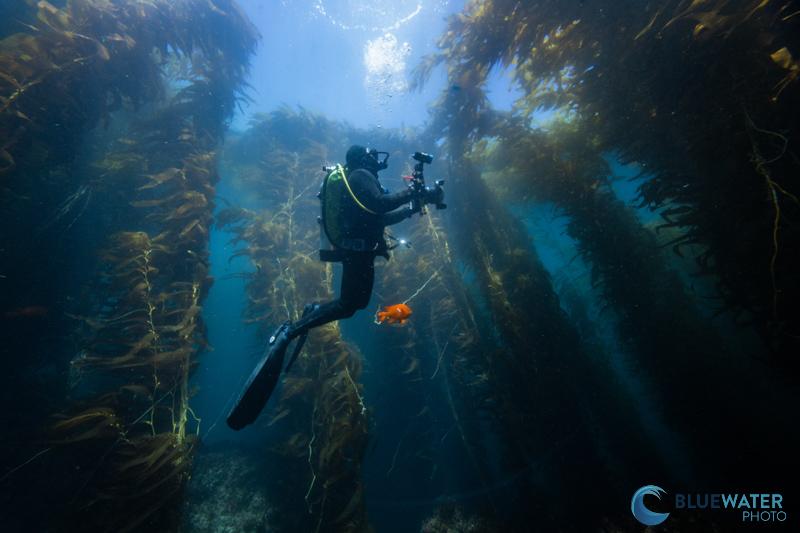
Photo captured with the Sony A7C R and the LAOWA 10mm f/2.8 wide lens
With improvements in autofocus with the Sony A7R V, I now believe the Canon 8-15mm fisheye lens with the Sigma MC-11 adapter is the fisheye option for most wide angle shooters. I found the autofocus to be effective, though not as fast as a Sony native lens.
For both photo and video, the Sony 16-35mm F4 lens with an 8-inch dome or larger is an excellent choice. There are also some great wet wide-angle lenses available such as the Nauticam wet wide-angle lens or the Kraken KRL-01 wet wide-angle lens that can be used with the Sony 28mm prime lens. The Sony 28mm prime lens also works well with a fisheye conversion lens to capture even wider shots of large reefscapes.
If you're looking for the most versatile wide-angle Sony set up for underwater shooting, the Sony FE 28-60mm F4-F5.6 lens behind a flat port with zoom capability paired with the Nauticam WWL-1B Wide-Angle Wet lens is the way to go. The downside is that it's currently only compatible with Nauticam and Marelux housings. Check out the Underwater Photography Guide's article about the Sony FE 28-60mm F4-F5.6 lens for more information or email us at sales@bluewaterphotostore.com to get set up with this combination.
Finally, it is worth mentioning the new LAOWA 10mm f/2.8 rectilinear wide angle lens. We had the opportunity to use this lens with the Sony A7C R in Catalina and the image quality was fantastic! As LAOWA's first autofocusing lens, LAOWA did an excellent job making the lens just as fast as any other native Sony lens. Even down to f/7.1 the corners were surprisingly sharp in our images.
Best Mid-Range Lenses
The Sony 28-70mm F3.5-F5.6, the Sony 24-70mm F4 and the Sony 35mm F2.8 portrait lens are three good mid-range options.
Best Macro Lenses
There are two native Sony lenses that we think are great macro options: the Sony 90mm and 50mm macro. The 90mm has a faster autofocus motor, but if you need to get a little more in your composition, the 50mm macro does an ok job. Recently, we reviewed the Sigma 105mm f/2.8 DN DG Art macro lens. It's an excellent and more affordable option to the Sony 90mm with better image quality. However, it is not a great choice for video due to focus breathing. We already mentioned the Sony FE 28-60mm F4-F5.6 lens and how it makes a great wide-angle option when used with a wide-angle wet lens, but combine it with the Nauticam Compact Macro Converter CMC-2, and it becomes a very versatile and highly capable macro set up too.
Canon Lenses for the Sony A7C R
Canon lenses can be attached to the Sony A7C R with the Metabones, Sigma MC-11, or Photodiox adapters, but auto-focus is generally better with Sony lenses. Lenses like the Canon 8-15mm, 16-35mm, 17-40mm, and 100mm can work well. I found that the Canon 8-15mm fisheye lens worked better with the Sigma MC-11 adapter than with the metabones adapter.
Conclusions
After diving with the camera, it's clear to us that the Sony A7C R is the perfect intersection of size, price, and image quality. If you had told me five years ago that a camera the size of the A6000 could take 61 megapixel, full-frame photos, I wouldn't have believed you. But low and behold, the best image quality Sony has to offer is available in an affordable, travel-friendly camera. We hope that by writing this review, we can inform our community of underwater enthusiasts of this camera option that aligns quite closely with what each of us value in our unique artform.
